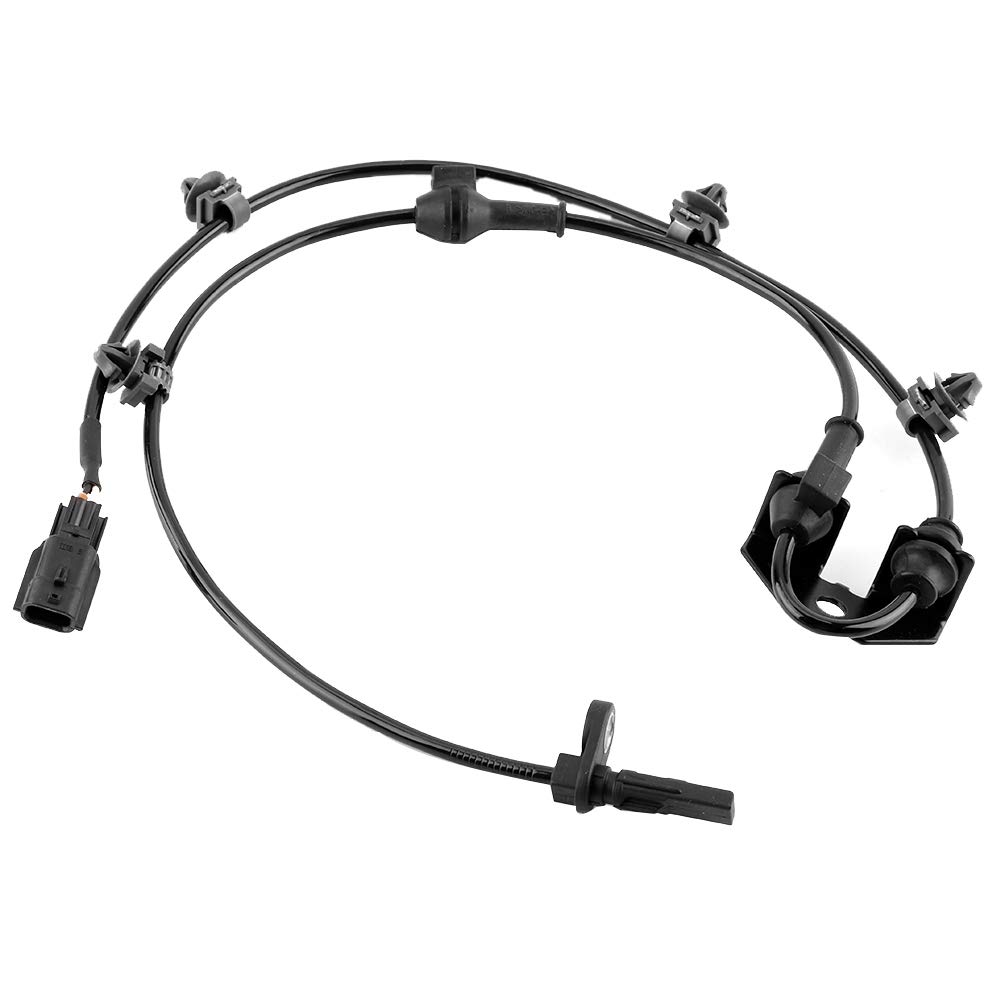When it comes to maintaining your Mazda 3, the fuel pump is one of the most critical components you’ll need to consider. This device plays a big role in ensuring your engine runs smoothly and efficiently. But what happens when it’s time for a replacement? Do you opt for an OEM (Original Equipment Manufacturer) fuel pump or an aftermarket option? The decision can seem daunting, especially with both types having unique benefits.
In this guide, we’ll explore the world of Mazda 3 Fuel Pump Replacement replacements, what makes OEM pumps tick, and what advantages aftermarket options offer. Whether you’re a DIY enthusiast or prefer professional help, understanding these differences will empower you to make the right choice for your vehicle’s performance and longevity. Ready to rev up your knowledge about fuel pumps? Let’s get started!
Understanding Fuel Pumps And Their Importance
Fuel pumps play a crucial role in the operation of your Mazda 3. They deliver fuel from the tank to the engine, ensuring proper combustion. Without a functioning fuel pump, your vehicle won’t run.
Depending on the design specifications, these components can be found either inside or outside the gas tank. In modern vehicles like the Mazda 3, you’ll typically find an electric fuel pump submerged in the tank. This setup helps keep the vehicle cool and reduces noise during operation.
The importance of a reliable fuel pump cannot be overstated. A failing or inefficient pump can lead to poor engine performance, reduced fuel efficiency, and even stalling while driving. Addressing issues with this component promptly is vital for maintaining overall vehicle health.
Moreover, understanding how these pumps work enhances your ability to identify potential problems early on. Symptoms like unusual noises or difficulty starting could indicate that it’s time for a replacement.
Regular maintenance checks can extend the life of your Mazda 3’s fuel pump and ensure smooth driving experiences over time.
Overview Of OEM Fuel Pumps
When replacing the fuel pump in your Mazda 3, OEM (Original Equipment Manufacturer) fuel pumps are often a top choice. These parts come directly from the manufacturer and are designed for your vehicle model. This means they adhere closely to Mazda’s original specifications.
OEM fuel pumps guarantee compatibility, ensuring they fit seamlessly within your car’s system. Their design matches exactly what was originally engineered into your vehicle, which can lead to better performance and reliability over time. Knowing that these parts meet strict quality control standards provides peace of mind.
OEM pumps are usually straightforward to install since they’re crafted specifically for easy integration into existing systems. Mechanics familiar with Mazda vehicles will recognise these components immediately, streamlining the replacement process.
Though typically more expensive than aftermarket options, many owners value their longevity and durability. Since they are built to last longer under normal driving conditions, this can sometimes justify their higher price tag.
Choosing an OEM fuel pump means prioritizing quality assurance. You receive a product backed by years of industry experience and research aimed at optimizing engine performance.
Advantages Of OEM Mazda 3 Fuel Pump
OEM Mazda 3 Fuel Pump are designed specifically for Mazda vehicles, ensuring perfect compatibility. This tailored fit minimizes installation issues and immediately provides smooth operation. With OEM parts, you can rest assured that they meet Mazda’s stringent quality standards.
Durability is another significant advantage of OEM fuel pumps. They are built with high-grade materials to withstand harsh conditions and prolonged use. As a result, you can expect a longer lifespan compared to some aftermarket alternatives.
Performance consistency is key when it comes to vehicle components. OEM fuel pumps deliver reliable performance that matches your car’s original specifications. This means better fuel efficiency and enhanced engine performance over time.
Warranty coverage often accompanies OEM products. If any issues arise after installation, you’ll have peace of mind knowing you’re protected under warranty terms provided by the manufacturer.
Using an OEM part helps maintain your vehicle’s resale value. Buyers typically prefer cars with original parts intact, as this indicates proper care and maintenance throughout their life cycle.
Overview Of Aftermarket Fuel Pumps
Aftermarket fuel pumps are alternatives to original equipment manufacturer (OEM) parts. They come from various manufacturers and often aim to provide similar or improved performance at a lower cost. Many car enthusiasts appreciate these options for their flexibility in choosing brands that align with personal preferences.
These fuel pumps can vary significantly in design, materials, and technology. Some aftermarket versions may offer enhanced features such as increased flow rates or better durability under harsh conditions. Many drivers opt for them to boost engine performance or replace a failing OEM pump without breaking the bank.
One of the appealing aspects of aftermarket fuel pumps is their availability. Numerous retailers stock diverse models, making it easier for Mazda 3 owners to find a suitable replacement quickly. This accessibility is particularly beneficial during emergencies when immediate repairs are necessary.
However, the quality of aftermarket products can be inconsistent. While some brands maintain high manufacturing standards, others might cut corners to save costs, potentially risking reliability and longevity.
When considering an aftermarket option, it’s essential to research thoroughly. Reading reviews and comparing specifications will help ensure you select a product that effectively meets your vehicle’s requirements.
Advantages Of Aftermarket Fuel Pumps
Aftermarket fuel pumps have various advantages that appeal to many Mazda 3 owners. One of the most notable benefits is cost-effectiveness. Typically, aftermarket options are more affordable than OEM counterparts, allowing you to save money without sacrificing quality.
Another significant advantage is availability. Aftermarket fuel pumps are often found in auto parts stores and online marketplaces. This accessibility means you’ll likely see a suitable replacement quickly, especially if you need an urgent repair.
Performance upgrades are also something to consider when looking at aftermarket products. Many aftermarket fuel pumps are designed for enhanced performance or increased flow rates, offering drivers the potential for improved acceleration and overall engine efficiency.
Aftermarket selections offer a wide range of customization options. You may find models tailored specifically to your driving style or modifications to your Mazda 3. This level of personalization can help you achieve the exact performance characteristics you desire.
Some aftermarket manufacturers provide warranties that rival those offered by OEMs. These extended guarantees can give peace of mind as they signal confidence in their product’s durability and reliability over time.
Key Differences Between OEM And Aftermarket Mazda 3 Fuel Sender
There are notable differences between OEM and aftermarket fuel pumps for your Mazda 3. First, OEM Mazda 3 Fuel Sender are made by the vehicle manufacturer or their authorized suppliers. This ensures they meet Mazda’s original specifications and quality standards.
In contrast, aftermarket fuel pumps come from third-party manufacturers. While some may offer similar performance levels, others might not adhere to the same rigorous testing as OEM parts, leading to inconsistencies in quality.
Another difference lies in warranty coverage and support. OEM fuel pumps typically come with a manufacturer’s warranty, guaranteeing their reliability over time. Aftermarket alternatives may have varied warranties depending on the brand, which could expose you if issues arise.
Price is also a key factor when comparing these two types of fuel pumps. Generally, OEM parts are more expensive due to their higher manufacturing standards and guaranteed fitment with your vehicle model.
Installation ease plays an important role as well. Since OEM pumps are designed specifically for Mazda 3 vehicles, they often fit seamlessly into existing systems compared to aftermarket versions that may require modifications.
Factors To Consider When Choosing A Fuel Pump
Several factors come into play when selecting a fuel pump for your Mazda 3. First, compatibility is crucial. Ensure the pump matches your vehicle’s make and model specifications. An incorrect fit can lead to performance issues.
Next, consider quality and reliability. Due to rigorous testing standards, OEM pumps are known for their durability and consistent performance. Aftermarket options vary widely in quality; research brands or read reviews before choosing.
Price is another significant factor. Meanwhile, aftermarket pumps offer lower prices and balance costs with potential longevity and warranty support. Spending more upfront on an OEM part sometimes pays off in the long run through fewer repairs.
You should also assess installation requirements. Some aftermarket pumps may require modifications during installation, complicating what should be a straightforward process with an OEM replacement that fits seamlessly.
Evaluate warranty coverage offered by both types of fuel pumps. A solid warranty can provide peace of mind against unexpected failures shortly after purchase while reflecting manufacturer confidence in their product’s durability.
Cost Analysis: OEM Vs. Aftermarket
Cost is often a significant factor when considering a Mazda 3 fuel pump replacement. OEM (Original Equipment Manufacturer) fuel pumps tend to be pricier than their aftermarket counterparts. This higher price reflects the brand’s reputation and the rigorous quality control associated with factory parts.
On average, an OEM fuel pump can cost between $200 and $500, depending on the model year and specific features. You’re not just paying for the part but also investing in reliability and longevity. Many drivers feel that this initial investment pays off over time through enhanced performance.
Aftermarket fuel pumps offer more budget-friendly options, typically costing between $100 and $300. However, prices vary widely based on brand reputation and specifications. While some aftermarket brands are known for quality, others may need to meet your expectations.
When selecting between OEM and aftermarket pumps, it’s essential to weigh both costs against potential risks. A cheaper option might seem attractive, but if it fails prematurely, it could lead to additional repairs down the line.
Balancing upfront costs with long-term value will guide your decision-making process as you navigate your Mazda three-fuel pump replacement journey.
Conclusion
When selecting a fuel pump for your Mazda 3, choosing OEM and aftermarket options can significantly impact your vehicle’s performance. Each type has its unique benefits that cater to different needs and preferences.
OEM fuel pumps are designed specifically for Mazda vehicles, ensuring compatibility and reliability. They often come with warranties, providing peace of mind for drivers prioritising quality and longevity in their automotive parts.
On the other hand, aftermarket fuel pumps may offer cost-effective solutions without sacrificing essential features. These alternatives can present appealing choices for those looking to save money or customize their vehicles.
Your driving habits will also influence the decision-making process. If you frequently drive under demanding conditions or require high performance from your Mazda 3, investing in an OEM part could be wise.
Understanding both options helps you make an informed choice tailored to your individual needs while considering factors like budget and performance expectations. Prioritize what matters most for your driving experience as you weigh the pros and cons of each option available today.
FAQs
What is an OEM fuel pump?
OEM stands for Original Equipment Manufacturer. These pumps are made by the same company that produced the original part for your vehicle.
Are aftermarket fuel pumps reliable?
Many aftermarket options offer reliability and good performance, but quality can vary widely between brands. Always check reviews and ratings before purchasing.
How do I know if my Mazda 3 needs a new fuel pump?
Signs include difficulty starting, stalling, loss of power during acceleration, or poor fuel efficiency. If you notice any of these symptoms, consider having your vehicle checked.
Can I install a new fuel pump myself?
If you’re comfortable working on cars and have basic mechanical skills, you can replace the fuel pump with proper tools and guidance from manuals or online resources.




